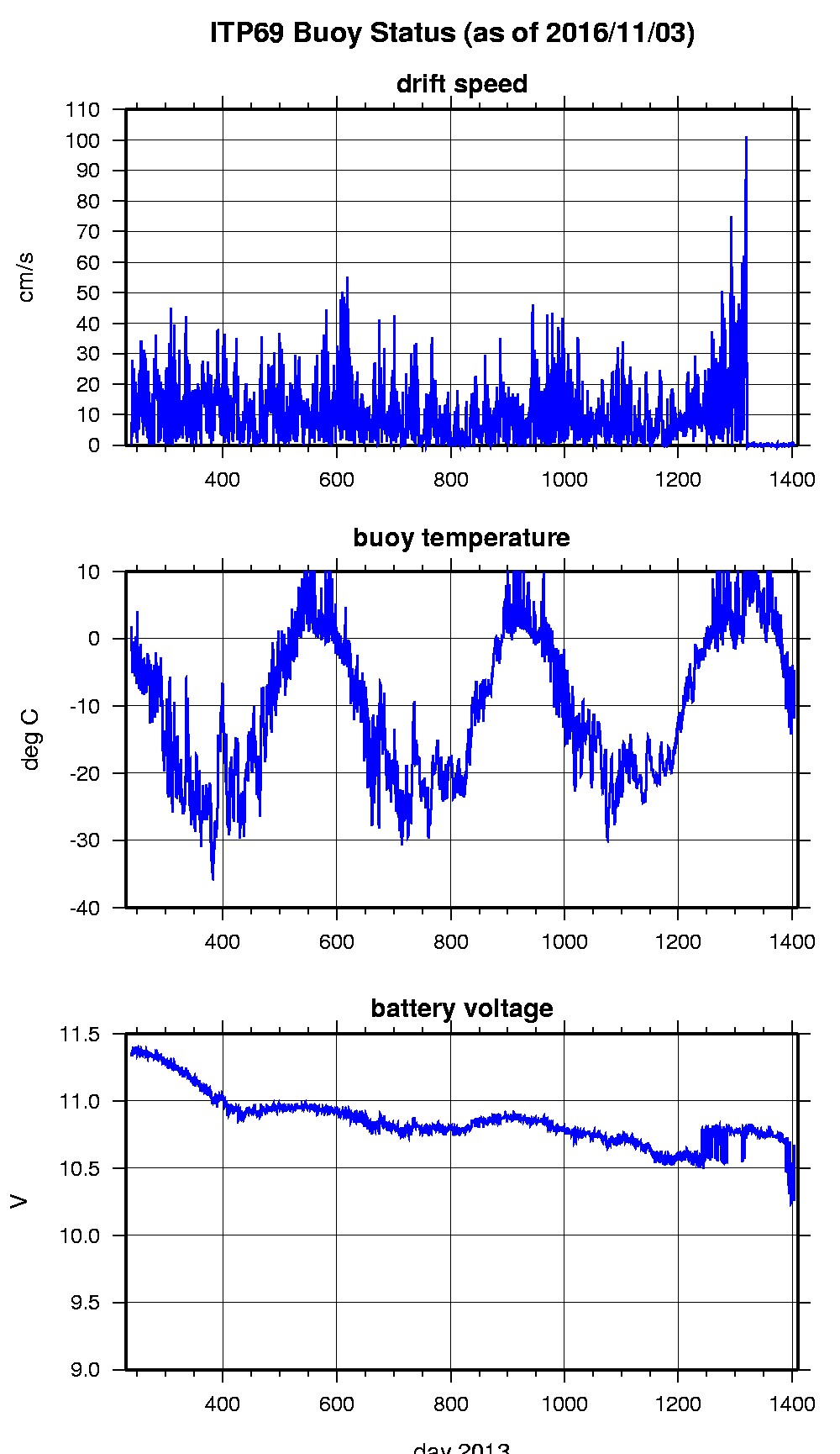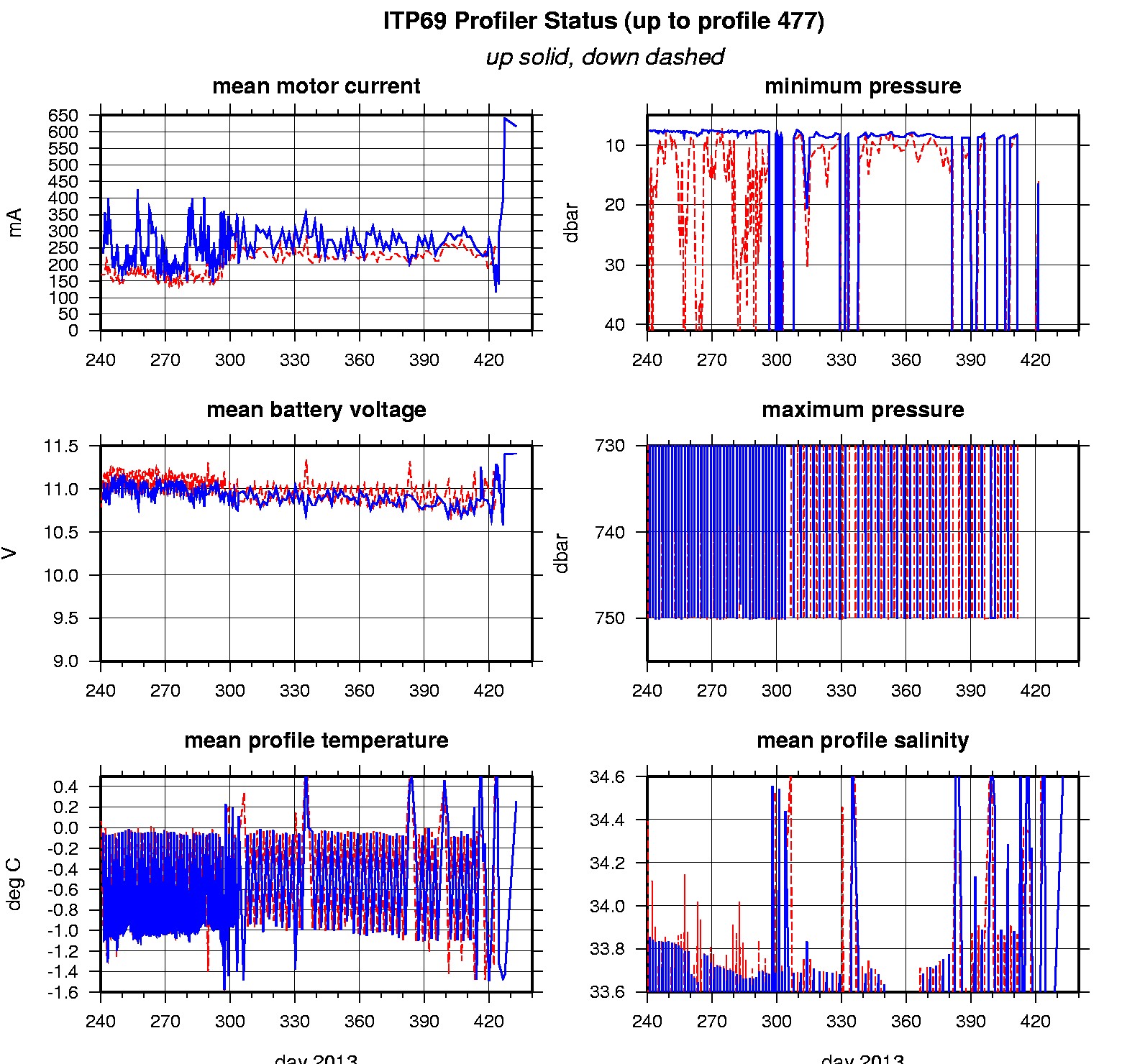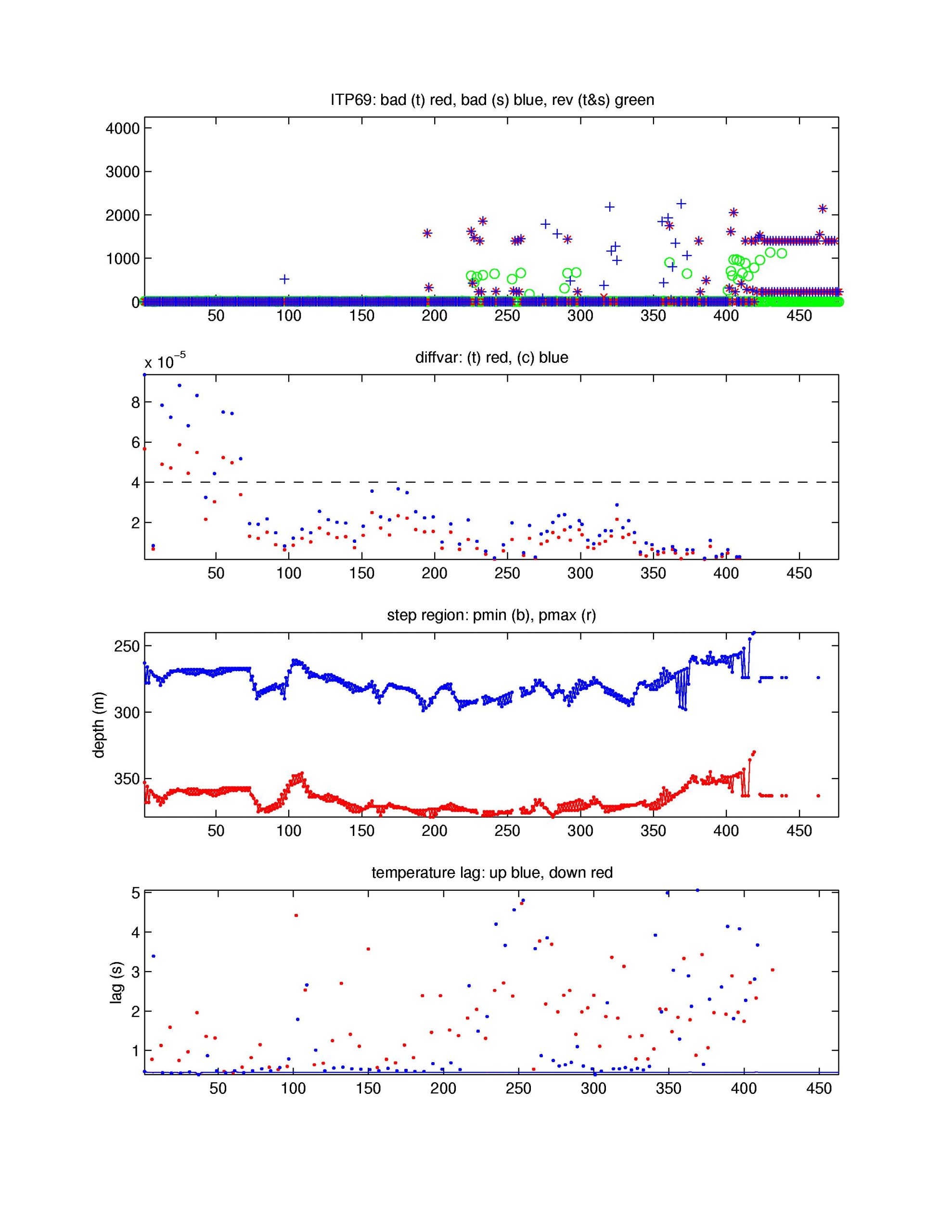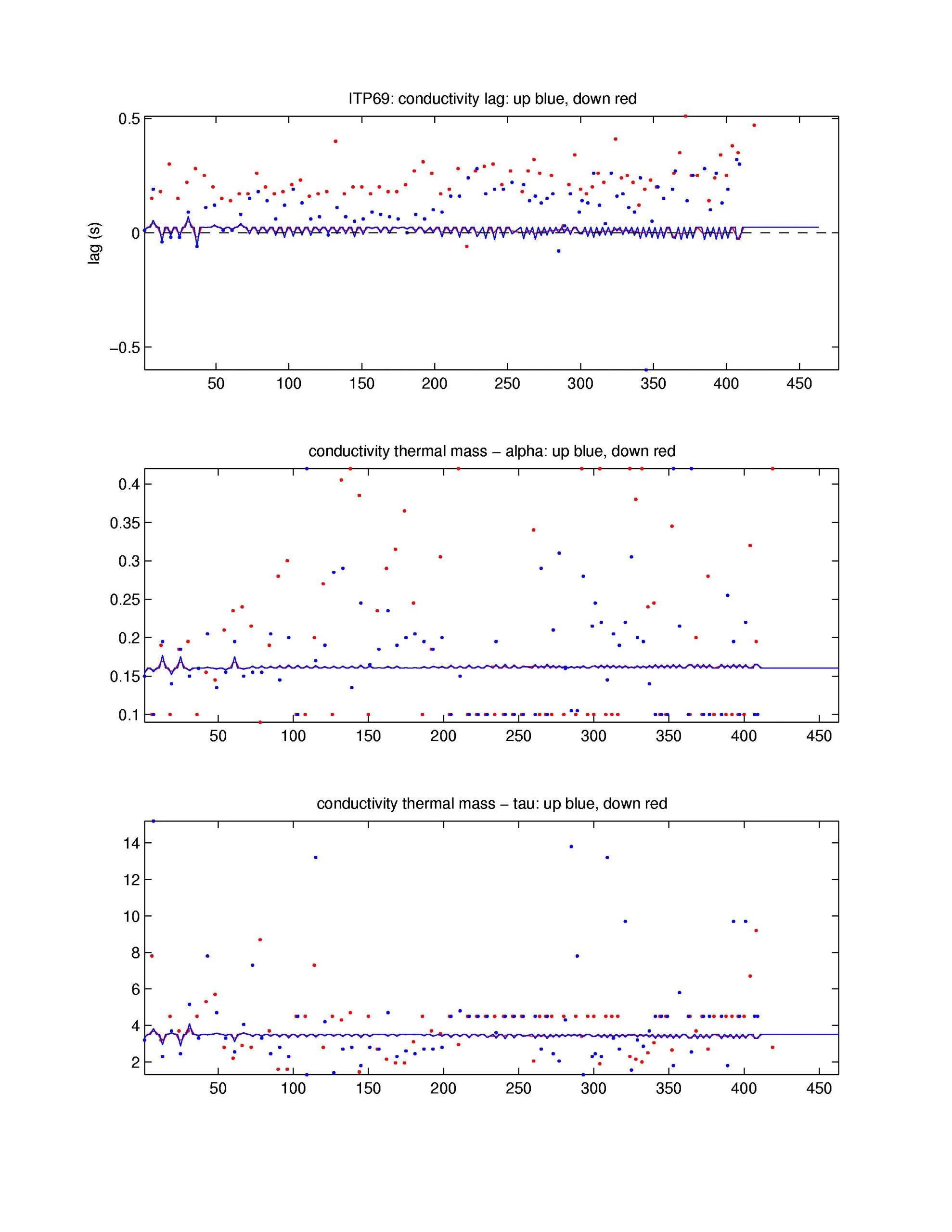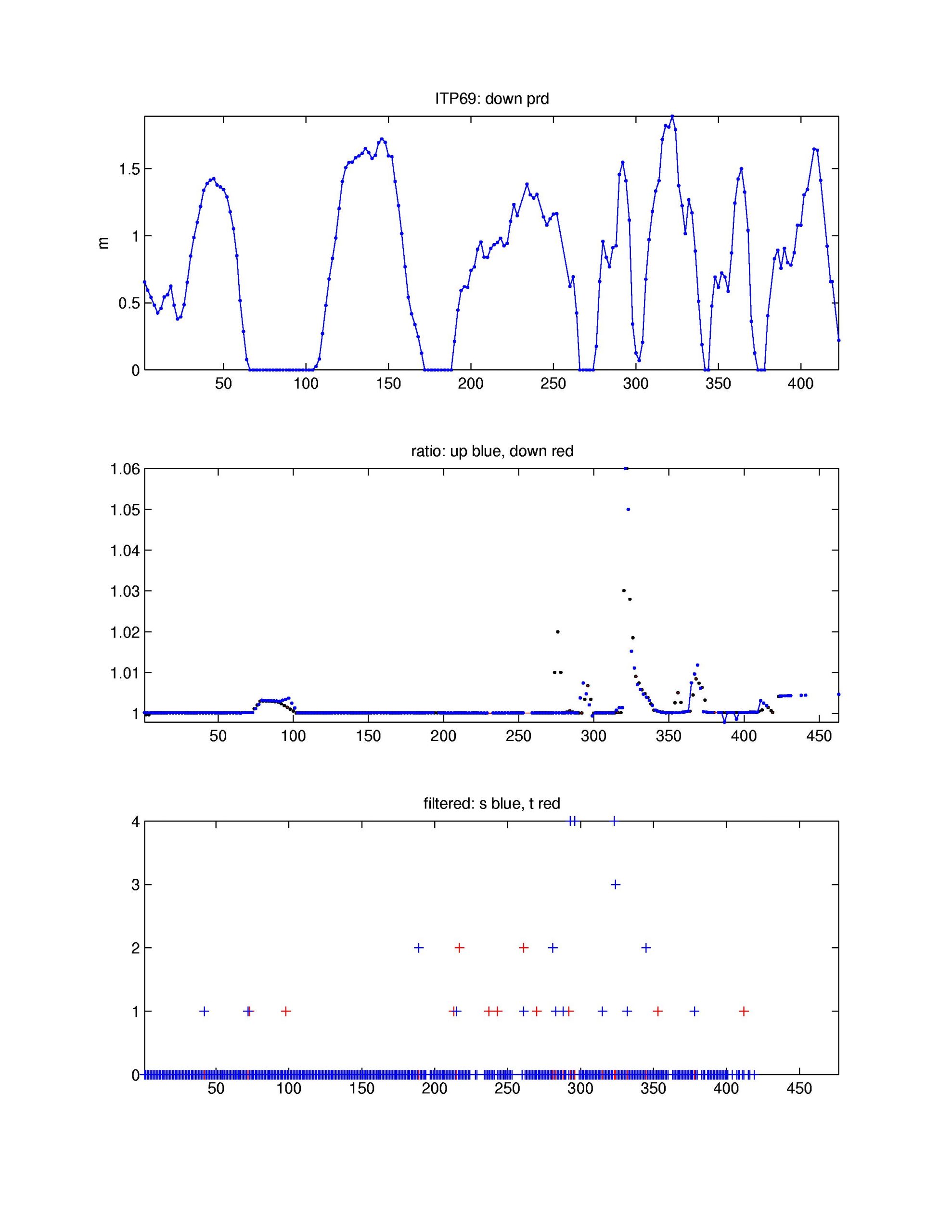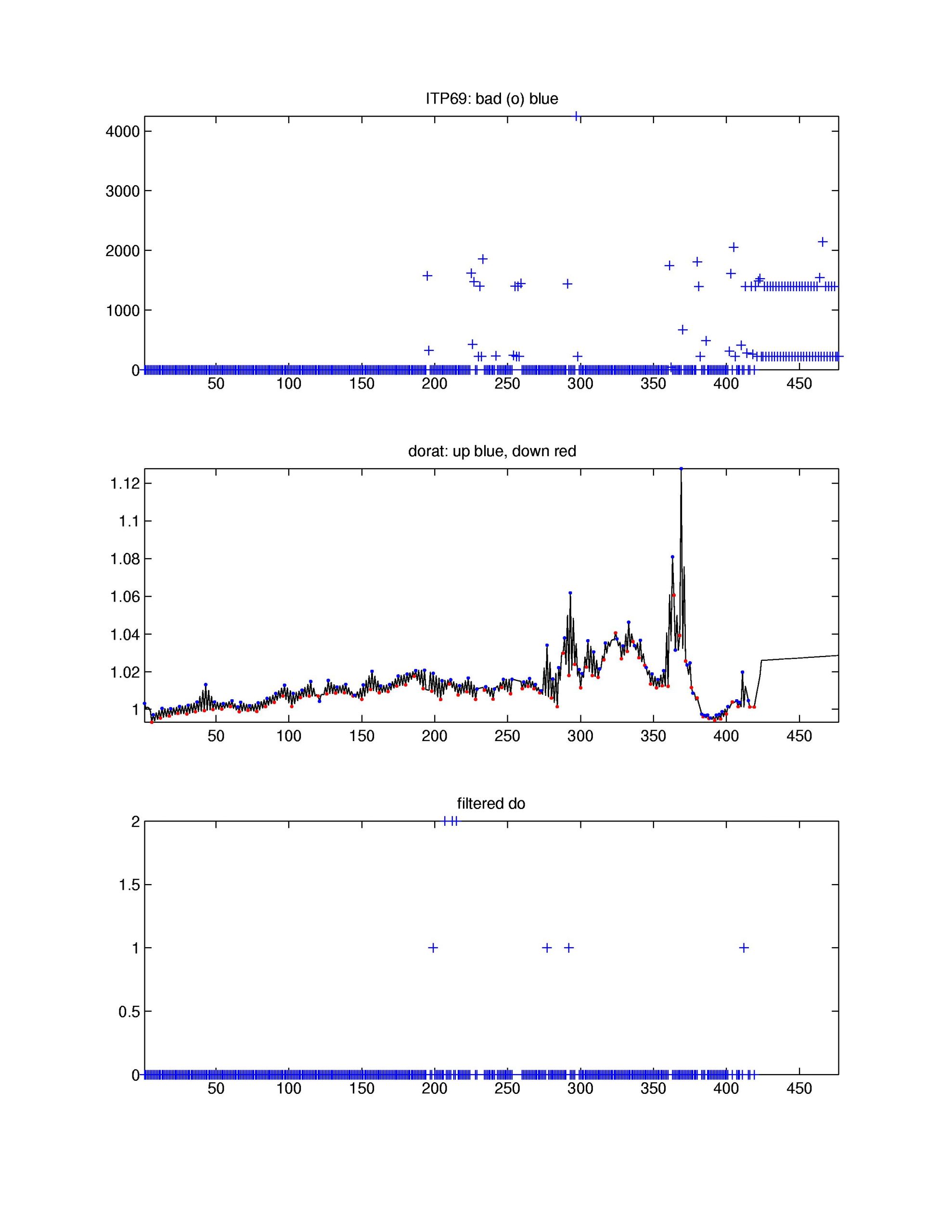ITP 069 Data Processing
The 477 profiles that were transmitted from the ITP were processed according to the procedures described in the ITP Updated Data Processing Procedures. The processing parameters for are shown in the figures to the right. The biosuite sensor data handling are described in Laney et al., (2014), while SAMI data validation are described in Islam et al., (2017).
Until the profiler dragged on shallow bathymetry and was subsequently lost, the CTD, dissolved oxygen, and biosuite sensors acquired good data. The SAMI sensor provided good time series of temperature, salinity and dissolved oxygen at 6 m, but the pH unit had problems and the pCO2 data were deemed to be bad in post processing.
See the Data Products tab to the left for descriptions of the three levels (I, II, III) of data processing and to access all data.
References:
Islam, F., M.D. DeGrandpre, C.M Beatty, M.-L. Timmermans, R.A. Krishfield, J.M Toole, and S.R. Laney, 2017. Sea surface pCO2 and O2 dynamics in the partially ice-covered Arctic Ocean. Journal of Geophysical Research, Vol. 122, doi:10.1002/2016JC012162.
Laney, S.R., R.A. Krishfield, J.M. Toole, T.R. Hammar, C.J. Ashjian, and M.-L. Timmermans, 2014. Assessing Algal Biomass and Bio-optical Distributions in Perennially Ice-Covered Ocean Ecosystems. Polar Science, Vol. 8, http://dx.doi.org/10.1016/j.polar.2013.12.003.
